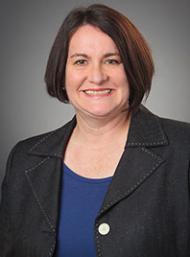
Welcome to Hot Take, where we examine new and challenging topics in athletic training. This month, we are looking at CAATE’s new Curricular Content Standards from 2018, which open up potential questions about the scope of practice for athletic trainers. Below, CAATE President LesLee Taylor, PhD, LAT, ATC, shares what these are and how they may affect you.

Board of Certification (BOC): The BOC establishes both the standards for the practice of athletic training and the continuing education requirements for BOC certified athletic trainers. The BOC works with state regulatory agencies to provide credential information, professional conduct guidelines and regulatory standards on certification issues. The BOC operates independently (no parent organization).
Commission on Accreditation of Athletic Training Education (CAATE): CAATE is a professional accrediting body whose mission it is to define, measure and continually improving athletic training education. CAATE operates independently (no parent organization), and is recognized by the Council for Higher Education Accreditation.
National Athletic Trainers’ Association (NATA): NATA is the professional membership association for ATs and others who support the athletic training profession. NATA’s mission is to represent, engage and foster the continued growth and development of the athletic training profession and athletic trainers as unique health care providers.
NATA Research & Education Foundation: The NATA Foundation champions research, supports education and enhances knowledge to optimize the clinical experience and outcomes within the diverse patient populations served by the athletic training profession. NATA is the parent organization of the NATA Foundation.
Note that while all of the organizations listed above play important roles in shaping athletic training practice, none are responsible for establishing the scope of practice for the profession. In fact, there is no one established scope of practice for the profession! The scope of practice for an athletic trainer is defined by the state practice act of the state in which the AT is credentialed and practicing, and those definitions vary greatly.
State practice acts may reference the BOC Practice Standards, but often extend to more clearly identify what ATs can and cannot do within that state. For example, Alabama’s state practice act indicates that to treat injuries the AT “may use therapeutic exercise and modalities for the treatment of athletic injuries for which he or she has received appropriate training or education,” whereas Florida’s state practice act indicates that the skills the AT performs are the purview of the collaborating physician with which the AT works. These are just two examples, and ATs should be familiar with their scope as defined by their state.
As part of determining scope of practice, authors of state practice acts look to the knowledge and skills ATs are taught within their professional education. The Curricular Content Standards, which were released March 2, are written to enable ATs to practice at the top of their scope of practice, regardless of which state they are educated or reside in. It is our belief that the new Curricular Content Standards will help to elevate the future practice of athletic training.
As students, what do we need to know?
Students need to understand what these new standards mean. The additions and adjustments in the newest standards are mostly looking toward how the athletic training profession is evolving and gaining skills in different settings, which allows ATs to adapt to these changes. They will become most relevant in athletic training education programs in the coming years as the profession switches to the entry level master’s degrees and are focused on advancing the education of athletic trainers and broadening skill sets. New additions to the standards include:
1. IV and Diabetes (including use of glucometer, administering glucagon and insulin)
2. Wound closure
3. Casting
4. Dislocation reduction
5. Joint mobilization and manipulation
6. Drug overdose
As current students, we can look forward to adding these skill sets to our arsenals in the coming years and look forward to the future of athletic training! You can read more on the CAATE website.





